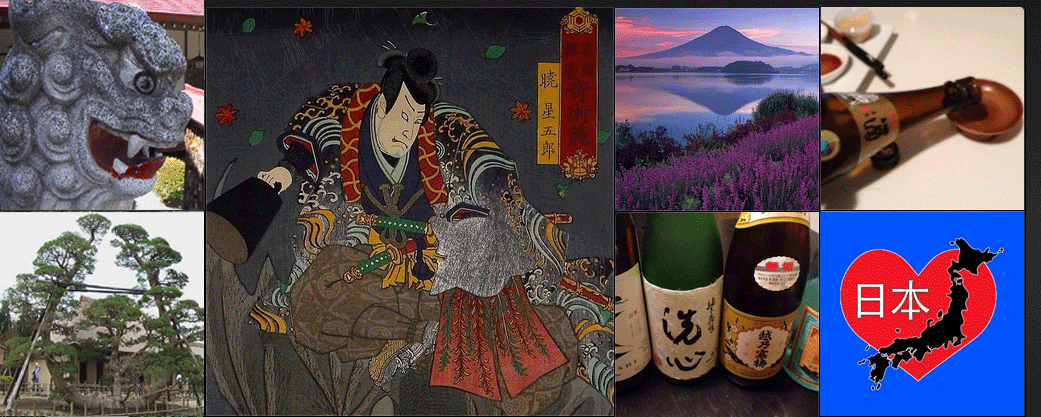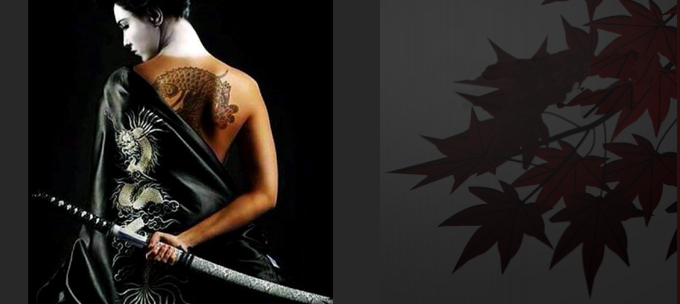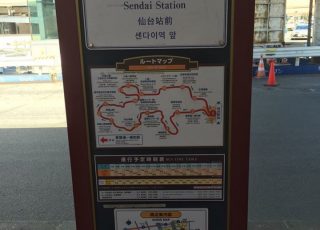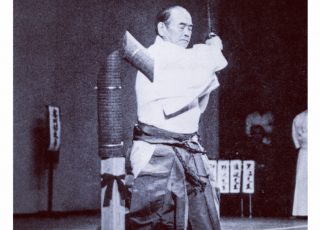Japan is an Island Country in East Asia.
It is in the northwest Pacific Ocean and is bordered on the west by the Sea of Japan, extending from the Sea of Okhotsk in the north toward the East China Sea, Philippine Sea, and Taiwan in the south. Japan is a part of the Ring of Fire, and spans an archipelago of 14,125 islands, with the five main islands being Hokkaido, Honshu (the "mainland"), Shikoku, Kyushu, and Okinawa. Tokyo is the country's capital and largest city, followed by Yokohama, Osaka, Nagoya, Sapporo, Fukuoka, Kobe, and Kyoto. Total Area is 145,936 mi².Japan has over 125 million inhabitants and is the 11th most populous country in the world, as well as one of the most densely populated. About three-fourths of the country's terrain is mountainous, concentrating its highly urbanized population on narrow coastal plains. Japan is divided into 47 administrative prefectures and eight traditional regions. The Greater Tokyo Area is the most populous metropolitan area in the world. Japan has the world's highest life expectancy, although it is experiencing a population decline due to its very low birth rate.
Japan has been inhabited since the Upper Paleolithic period (30,000 BC). Between the fourth and ninth centuries AD, the kingdoms of Japan became unified under an emperor and the imperial court based in Heian-kyō. Beginning in the 12th century, political power was held by a series of military dictators (shōgun) and feudal lords (daimyō), and enforced by a class of warrior nobility (samurai). After a century-long period of civil war, the country was reunified in 1603 under the Tokugawa shogunate, which enacted an isolationist foreign policy. In 1854, a United States fleet forced Japan to open trade to the West, which led to the end of the shogunate and the restoration of imperial power in 1868. In the Meiji period, the Empire of Japan adopted a Western-modeled constitution, and pursued a program of industrialization and modernization. Amidst a rise in militarism and overseas colonization, Japan invaded China in 1937 and entered World War II as an Axis power in 1941. After suffering defeat in the Pacific War and two atomic bombings, Japan surrendered in 1945 and came under a seven-year Allied occupation, during which it adopted a new constitution.
The name "Japan" is based on Min or Wu Chinese pronunciations of 日本 and was introduced to European languages through early trade. In the 13th century, Marco Polo recorded the Early Mandarin Chinese pronunciation of the characters 日本國 as Cipangu. The old Malay name for Japan, Japang or Japun, was borrowed from a southern coastal Chinese dialect and encountered by Portuguese traders in Southeast Asia, who brought the word to Europe in the early 16th century. The first version of the name in English appears in a book published in 1577, which spelled the name as Giapan in a translation of a 1565 Portuguese letter. 日本国 (Japanese) Nippon-koku and the name for Japan in Japanese is written using the kanji 日本 and is pronounced Nippon or Nihon. Before 日本 was adopted in the early 8th century, the country was known in China as Wa (倭, changed in Japan around 757 to 和) and in Japan by the endonym Yamato. Nippon, the original Sino-Japanese reading of the characters, is favored for official uses, including on Japanese banknotes and postage stamps. Nihon is typically used in everyday speech and reflects shifts in Japanese phonology during the Edo period. The characters 日本 mean "sun origin", which is the source of the popular Western epithet "Land of the Rising Sun".
Under the 1947 constitution, Japan has maintained a unitary parliamentary constitutional monarchy with a bicameral legislature, the National Diet. Japan is a developed country and a great power, with one of the largest economies by nominal GDP. Japan has renounced its right to declare war, though it maintains a Self-Defense Force that ranks as one of the world's strongest militaries. A global leader in the automotive, robotics, and electronics industries, the country has made significant contributions to science and technology, and is one of the world's largest exporters and importers. It is part of multiple major international and intergovernmental institutions.
Japan is a cultural superpower as the culture of Japan is well known around the world, including its art, cuisine, film, music, and popular culture, which encompasses prominent manga, anime, and video game industries.
Holidays. Public holidays in Japan and Japanese festivals
Officially, Japan has 16 national, government-recognized holidays. Public holidays in Japan are regulated by the Public Holiday Law (国民の祝日に関する法律, Kokumin no Shukujitsu ni Kansuru Hōritsu) of 1948.[315] Beginning in 2000, Japan implemented the Happy Monday System, which moved a number of national holidays to Monday in order to obtain a long weekend.[316] The national holidays in Japan are New Year's Day on January 1, Coming of Age Day on the second Monday of January, National Foundation Day on February 11, The Emperor's Birthday on February 23, Vernal Equinox Day on March 20 or 21, Shōwa Day on April 29, Constitution Memorial Day on May 3, Greenery Day on May 4, Children's Day on May 5, Marine Day on the third Monday of July, Mountain Day on August 11, Respect for the Aged Day on the third Monday of September, Autumnal Equinox on September 23 or 24, Health and Sports Day on the second Monday of October, Culture Day on November 3, and Labor Thanksgiving Day on November 23.Japanese Cuisine
Japanese cuisine offers a vast array of regional specialties that use traditional recipes and local ingredients. Seafood and Japanese rice or noodles are traditional staples. Japanese curry, since its introduction to Japan from British India, is so widely consumed that it can be termed a national dish, alongside ramen and sushi.[320][321] Traditional Japanese sweets are known as wagashi. Ingredients such as red bean paste and mochi are used. More modern-day tastes include green tea ice cream.Popular Japanese beverages include sake, which is a brewed rice beverage that typically contains 14–17% alcohol and is made by multiple fermentation of rice. Beer has been brewed in Japan since the late 17th century. Green tea is produced in Japan and prepared in forms such as matcha, used in the Japanese tea ceremony.
Some intresting facts about Japan:
Over 80% of the country is mountainous.In Japan KFC Is a Christmas tradition.
Young women celebrate Coming of Age Day, 20 years old (成人の日, Seijin no Hi) in Harajuku, Tokyo.
The written Japanese language uses a combination of three writing systems: kanji, hiragana, and katakana.
Japanese people have one of the highest life expectancies in the world.
There is a rabbit island in Japan.
The world's oldest company is found in Japan.
The number four is considered extremely unlucky in Japan.
Japan is famous for its cherry blossom.
Japan is the birthplace of karaoke.
They have super fast trains!
Japan is on four tectonic plates.
Japanese train stations have their own individual tunes.
Japan's national sport is sumo wrestling.
The first human inhabitants of the Japanese archipelago have been traced to the Paleolithic, around 38–39,000 years ago.
Around the 3rd century BC, the Yayoi people from the continent immigrated to the Japanese archipelago and introduced iron technology and agricultural civilization.
There are over 300 Kit-Kat flavours.
History of Japan
A Paleolithic culture from around 30,000 BC constitutes the first known habitation of the islands of Japan. This was followed from around 14,500 BC (the start of the Jōmon period) by a Mesolithic to Neolithic semi-sedentary hunter-gatherer culture characterized by pit dwelling and rudimentary agriculture. Clay vessels from the period are among the oldest surviving examples of pottery.From around 700 BC, the Japonic-speaking Yayoi people began to enter the archipelago from the Korean Peninsula, intermingling with the Jōmon; the Yayoi period saw the introduction of practices including wet-rice farming, a new style of pottery, and metallurgy from China and Korea. According to legend, Emperor Jimmu (grandson of Amaterasu) founded a kingdom in central Japan in 660 BC, beginning a continuous imperial line.Japan first appears in written history in the Chinese Book of Han, completed in 111 AD. Buddhism was introduced to Japan from Baekje (a Korean kingdom) in 552, but the development of Japanese Buddhism was primarily influenced by China.ined widespread acceptance beginning in the Asuka period (592–710).
In 645, the government led by Prince Naka no Ōe and Fujiwara no Kamatari devised and implemented the far-reaching Taika Reforms. The Reform began with land reform, based on Confucian ideas and philosophies from China.It nationalized all land in Japan, to be distributed equally among cultivators, and ordered the compilation of a household registry as the basis for a new system of taxation. The true aim of the reforms was to bring about greater centralization and to enhance the power of the imperial court, which was also based on the governmental structure of China. Envoys and students were dispatched to China to learn about Chinese writing, politics, art, and religion. The Jinshin War of 672, a bloody conflict between Prince Ōama and his nephew Prince Ōtomo, became a major catalyst for further administrative reforms. These reforms culminated with the promulgation of the Taihō Code, which consolidated existing statutes and established the structure of the central and subordinate local governments.These legal reforms created the ritsuryō state, a system of Chinese-style centralized government that remained in place for half a millennium.
The Nara period (710–784) marked the emergence of a Japanese state centered on the Imperial Court in Heijō-kyō (modern Nara). The period is characterized by the appearance of a nascent literary culture with the completion of the Kojiki (712) and Nihon Shoki (720), as well as the development of Buddhist-inspired artwork and architecture. A smallpox epidemic in (735 – 737) is believed to have killed as much as one-third of Japan's population. In 784, Emperor Kanmu moved the capital, settling on Heian-kyō (modern-day Kyoto) in 794.This marked the beginning of the Heian period (794–1185), during which a distinctly indigenous Japanese culture emerged. Murasaki Shikibu's The Tale of Genji and the lyrics of Japan's national anthem "Kimigayo" were written during this time.
Feudal era
Japan's feudal era was characterized by the emergence and dominance of a ruling class of warriors, the samurai. In 1185, following the defeat of the Taira clan by the Minamoto clan in the Genpei War, samurai Minamoto no Yoritomo established a military government at Kamakura. After Yoritomo's death, the Hōjō clan came to power as regents for the shōgun. The Zen school of Buddhism was introduced from China in the Kamakura period (1185–1333) and became popular among the samurai class.[40] The Kamakura shogunate repelled Mongol invasions in 1274 and 1281 but was eventually overthrown by Emperor Go-Daigo. Go-Daigo was defeated by Ashikaga Takauji in 1336, beginning the Muromachi period (1336–1573). The succeeding Ashikaga shogunate failed to control the feudal warlords (daimyō) and a civil war began in 1467, opening the century-long Sengoku period, Warring States.During the 16th century, Portuguese traders and Jesuit missionaries reached Japan for the first time, initiating direct commercial and cultural exchange between Japan and the West solidation of power began what was known as the Azuchi–Momoyama period. After the death of Nobunaga in 1582, his successor, Toyotomi Hideyoshi, unified the nation in the early 1590s and launched two unsuccessful invasions of Korea in 1592 and 1597.
Tokugawa Ieyasu served as regent for Hideyoshi's son Toyotomi Hideyori and used his position to gain political and military support. When open war broke out, Ieyasu defeated rival clans in the Battle of Sekigahara in 1600. He was appointed shōgun by Emperor Go-Yōzei in 1603 and established the Tokugawa shogunate at Edo (modern Tokyo). The shogunate enacted measures including buke shohatto, as a code of conduct to control the autonomous daimyō, and in 1639 the isolationist sakoku ("closed country") policy that spanned the two and a half centuries of tenuous political unity known as the Edo period (1603–1868). Modern Japan's economic growth began in this period, resulting in roads and water transportation routes, as well as financial instruments such as futures contracts, banking and insurance of the Osaka rice brokers. The study of Western sciences (rangaku) continued through contact with the Dutch enclave in Nagasaki.[ The Edo period gave rise to kokugaku ("national studies"), the study of Japan by the Japanese
Modern era
The United States Navy sent Commodore Matthew C. Perry to force the opening of Japan to the outside world. Arriving at Uraga with four "Black Ships" in July 1853, the Perry Expedition resulted in the March 1854 Convention of Kanagawa. Subsequent similar treaties with other Western countries brought economic and political crises. The resignation of the shōgun led to the Boshin War and the establishment of a centralized state nominally unified under the emperor (the Meiji Restoration). Adopting Western political, judicial, and military institutions, the Cabinet organized the Privy Council, introduced the Meiji Constitution (November 29, 1890), and assembled the Imperial Diet. During the Meiji period (1868–1912), the Empire of Japan emerged as the most developed states in Asia and as an industrialized world power that pursued military conflict to expand its sphere of influence. After victories in the First Sino-Japanese War (1894–1895) and the Russo-Japanese War (1904 – 1905), Japan gained control of Taiwan, Korea and the southern half of Sakhalin. The Japanese population doubled from 35 million in 1873 to 70 million by 1935, with a significant shift to urbanization.The early 20th century saw a period of Taishō democracy (1912–1926) overshadowed by increasing expansionism and militarization. World War I allowed Japan, which joined the side of the victorious Allies, to capture German possessions in the Pacific and in China. The 1920s saw a political shift towards statism, a period of lawlessness following the 1923 Great Tokyo Earthquake, the passing of laws against political dissent, and a series of attempted coups. This process accelerated during the 1930s, spawning several radical nationalist groups that shared a hostility to liberal democracy and a dedication to expansion in Asia. In 1931, Japan invaded and occupied Manchuria; following international condemnation of the occupation, it resigned from the League of Nations two years later. In 1936, Japan signed the Anti-Comintern Pact with Nazi Germany; the 1940 Tripartite Pact made it one of the Axis Powers
The Empire of Japan invaded other parts of China in 1937, precipitating the Second Sino-Japanese War (1937–1945). In 1940, the Empire invaded French Indochina, after which the United States placed an oil embargo on Japan. On December 7–8, 1941, Japanese forces carried out surprise attacks on Pearl Harbor, as well as on British forces in Malaya, Singapore, and Hong Kong, among others, beginning World War II in the Pacific. Throughout areas occupied by Japan during the war, numerous abuses were committed against local inhabitants, with many forced into sexual slavery. After Allied victories during the next four years, which culminated in the Soviet invasion of Manchuria and the atomic bombings of Hiroshima and Nagasaki in 1945, Japan agreed to an unconditional surrender. The war cost Japan its colonies and millions of lives. The Allies (led by the United States) repatriated millions of Japanese settlers from their former colonies and military camps throughout Asia, largely eliminating the Japanese Empire and its influence over the territories it conquered. The Allies convened the International Military Tribunal for the Far East to prosecute Japanese leaders for war crimes.
In 1947, Japan adopted a new constitution emphasizing liberal democratic practices. The Allied occupation ended with the Treaty of San Francisco in 1952, and Japan was granted membership in the United Nations in 1956. A period of record growth propelled Japan to become the second-largest economy in the world; this ended in the mid-1990s after the popping of an asset price bubble, beginning the "Lost Decade". In 2011, Japan suffered one of the largest earthquakes in its recorded history, triggering the Fukushima Daiichi nuclear disaster. On May 1, 2019, after the historic abdication of Emperor Akihito, his son Naruhito became Emperor, beginning the Reiwa era.
Climate in Japan
The climate of Japan is predominantly temperate but varies greatly from north to south. The northernmost region, Hokkaido, has a humid continental climate with long, cold winters and very warm to cool summers. Precipitation is not heavy, but the islands usually develop deep snowbanks in the winter.
In the Sea of Japan region on Honshu's west coast, northwest winter winds bring heavy snowfall during winter. In the summer, the region sometimes experiences extremely hot temperatures because of the Foehn. The Central Highland has a typical inland humid continental climate, with large temperature differences between summer and winter. The mountains of the Chūgoku and Shikoku regions shelter the Seto Inland Sea from seasonal winds, bringing mild weather year-round.The Pacific coast features a humid subtropical climate that experiences milder winters with occasional snowfall and hot, humid summers because of the southeast seasonal wind. The Ryukyu and Nanpō Islands have a subtropical climate, with warm winters and hot summers. Precipitation is very heavy, especially during the rainy season.The main rainy season begins in early May in Okinawa, and the rain front gradually moves north. In late summer and early autumn, typhoons often bring heavy rain. According to the Environment Ministry, heavy rainfall and increasing temperatures have caused problems in the agricultural industry and elsewhere.The highest temperature ever measured in Japan, 41.1 °C (106.0 °F), was recorded on July 23, 2018, and repeated on August 17, 2020.
most inforamtion found from onlinesources and www.wikipedia.org/wiki/Japan
Japan 日本! Over 1,000+ High Definition Videos of Travel Adventures in Japan - Click Here
Video Channel Playlists on Youttube.com
Japan 日本! High Def POV Videos of Over 1,000+ Personal Public High Definition Video Travel Adventures in Japan- Click Here
Moiwa Yama, Sapporo, Hokkaido, Japan
Mitakisanfudo Temple (三瀧山不動院 Sendai Shiro, 仙臺四郎 , 仙台四郎, Haga Shiro
Kamakura, Buddha, Komachi-dori Street
Hasedera Temple, Shrines, Statues and a Cave
Asakusa, Tokyo, Japan
Sapporo, Hokkaido, Japan
Snow Monsters, Snowboarding, Zao Rope Way, Zao, Onsen Town, Sangoro, Yamagata, Japan
ZAO Onsen Town, Zao Ski Resort
Follow JapaneseJapan on Social Media

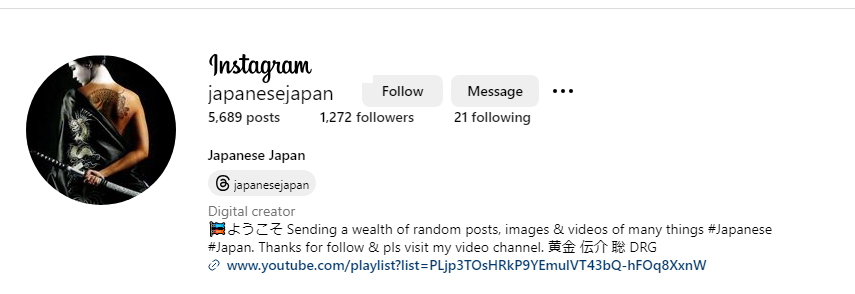

Play list Experience a persona...
> https://youtu.be/S9deiQedK2k > http://www.youtube.com/watch?v=4rV9kZSJPcc&list=PLjp3TOsHRkP8Sxtq5sKqXOHeD7Mwjja9Z Play list Experience a personal 55 video clips of #Tokugawa Castle built in 1617 in #Nikko #Toshogu #Japan
When in Sendai Japan - get on ...
When in Sendai Japan get on the #Sendai #loople, a cable car styled bus that loops many miles with many #Japanese #historical locations to visit like #hachiman, #miyagi museum of art, #destroyed site of #sendai #castle, #zuihoden #japan … https://www.youtube.com/playlist?list=PLjp3TOsHRkP_jqTKN30POs6FmrscftMaS
Nakamura Sensei on Choosing a ...
Nakamura Sensei on Choosing a Sword. When he wrote Tameshigiri no Shinzui in 1980 (now translated as The Spirit of the… Posted by Japanese Japan on Wednesday, April 4, 2018 剣を選ぶ中村先生。彼は1980年に「魂の魂」と書いていたときに、彼の推測では、日本のIaidoとBattodoの実務者の70%以上が体格が不適切にバランスしていた剣を使用していたと嘆いていました。その結果、その技法は必然的に歪められ、危機一髪の知れない道は切り離された。彼は後の本でこれを繰り返した。 Enkeisen。 Nakamura ryu、enkeisen(刀振りの完全な円形軌道)の重要な原理の1つは、刃のバランスを構成するものを理解するための鍵です。この運動は、中枢と下肢に大きな力、大きな弾性と上肢の運動範囲、および腹部の「脳」または原の関与による2つの統合を必要とする。  Nakamura Sensei on Choosing a Sword. When he wrote Tameshigiri no Shinzui in 1980 (now translated as The Spirit of the Sword) he lamented that by his estimation, over 70% of the practitioners of Iaido and Battodo in Japan were using swords that were inappropriately balanced for their physique and, as a result, their technique was inevitably distorted and the road to kikentaiichi cut off. He reiterated this in his later books. Enkeisen. One of the key principles of Nakamura ryu, enkeisen (the full circular trajectory of the sword swing) is key to understanding what constitutes balance in a blade. This movement requires great strength in the core and lower limbs, great elasticity and range of motion in the upper limb and an integration of the two through the engaging of the abdominal ‘brain’ or hara. https://www.youtube.com/channel/UCCcaBjsRrNX32a3RaBwfkow
Tokyo, 東京, Tōkyō, "Eastern Cap...
Tokyo, 東京, Tōkyō, “Eastern Capital”, Japan Japanese: [toːkjoː] ( listen), English /ˈtoʊki.oʊ/), officially Tokyo Metropolis (東京都 Tōkyō-to), is one of the 47 prefectures of Japan, and is both the capital and largest city of Japan. The Greater Tokyo Area is the most populous metropolitan area in the world.[7] It is the seat of the Emperor of Japan and the Japanese government. Tokyo is in the Kantō region on the southeastern side of the main island Honshu and includes the Izu Islands and Ogasawara Islands. Formerly known as Edo, it has been the de facto seat of government since 1603 when Shogun Tokugawa Ieyasu made the city his headquarters. It officially became the capital after Emperor Meiji moved his seat to the city from the old capital of Kyoto in 1868; at that time Edo was renamed Tokyo. Tokyo Metropolis was formed in 1943 from the merger of the former Tokyo Prefecture (東京府 Tōkyō-fu) and the city of Tokyo (東京市 Tōkyō-shi). Tokyo is often referred to and thought of as a city, but is officially known and governed as a “metropolitan …read more
History of Sendai, 仙台市, Japan
History of Sendai, 仙台市, Sendai-shi is the capital city of Miyagi Prefecture, Japan, and the largest city in the Tōhoku region, and the second largest city north of Tokyo, Japan. Edo period Although the Sendai area was inhabited as early as 20,000 years ago, the history of Sendai as a city begins from 1600, when the daimyo Date Masamune relocated to Sendai. Masamune was not happy with his previous stronghold, Iwadeyama. Iwadeyama was located to the north of his territories and was also difficult to access from Edo (modern-day Tokyo). Sendai was an ideal location, being in the centre of Masamune’s newly defined territories, upon a major road from Edo, and near the sea. Tokugawa Ieyasu gave Masamune permission to build a new castle in Aoba-yama (Mount Aoba), Sendai after the Battle of Sekigahara. The previous ruler of the Sendai area had used a castle located on Aobayama. At this time Sendai was written as 千代 (which literally means “a thousand generations”), because a temple with a thousand Buddha statues (千体 sentai) used to be located in Aobayama. Masamune changed …read more
21 Good Rules to Life
1. Do not turn your back on the various Ways of this world. Do not turn your back on the various ways of the world. The world will ask you to behave in a certain way – to conform to a certain way – you don’t have to. You have to live your own life but don’t turn your back to the ways of humanity, peace and fighting injustice. The world has many ways that you can and must take into account as you walk this path. There are truths on this world like compassion and justice that you must use on this way 2.Do not scheme for physical pleasure. There is not point in scheming just for physical pleasures. Never forget that you will die – if you admit it you will appreciate it much more. To be fearless in the face of the enemy – in your daily life – you have have to do what you have to do to get things done. 3.Do not intend to rely on anything. 4.Consider yourself lightly; consider the world deeply. …read more
Musashi establishes a "no-nons...
“It is important for the warrior to constantly meditate upon these things: 1. Think honestly within yourself in your dealings with all men. 2. Constant training is the only way to learn strategy. 3. Become familiar with every art you come across. 4. Understand the way of other disciplines. 5. Know the difference between right and wrong in the matters of men. 6. Strive for inner judgment and an understanding of everything. 7. See that which cannot be seen. 8. Overlook nothing, regardless of insignificance. 9. Do not waste your time idling or thinking after you have set your goals.” Miyamoto Musashi (1584 – 1645) “When you take up a sword, you must feel intent on cutting up the enemy. As you cut an enemy you must not change your grip, and your hands must not cower.” Extract from The Book of Five Rings, Miyamoto Musashi (1584 – 1645) The Book of Five Rings (五輪書 Go Rin No Sho) is a text on kenjutsu and the martial arts in general, written by the swordsman Miyamoto Musashi circa 1645. There have …read more
A BOOK OF FIVE RINGS, Go Rin N...
A BOOK OF FIVE RINGS “Go Rin No Sho” by Miyamoto Musashi INTRODUCTION I have been many years training in the Way of strategy, called Ni Ten Ichi Ryu, and now I think I will explain it in writing for the first time. It is now during the first ten days of the tenth month in the twentieth year of Kanei (1645). I have climbed mountain Iwato of Higo in Kyushu to pay homage to heaven, pray to Kwannon, [God(dess) of mercy in Buddhism. – Slaegr] and kneel before Buddha. I am a warrior of Harima province, Shinmen Musashi No Kami Fujiwara No Genshin, age sixty years. From youth my heart has been inclined toward the Way of strategy. My first duel was when I was thirteen, I struck down a strategist of the Shinto school, one Arima Kihei. When I was sixteen I struck down an able strategist Tadashima Akiyama. When I was twenty-one I went up to the capital and met all manner of strategists, never once failing to win in many contests. After that I went from …read more
Miyamoto Musashi’s Dokkōdo
“It is important for the warrior to constantly meditate upon these things: 1. Think honestly within yourself in your dealings with all men. 2. Constant training is the only way to learn strategy. 3. Become familiar with every art you come across. 4. Understand the way of other disciplines. 5. Know the difference between right and wrong in the matters of men. 6. Strive for inner judgment and an understanding of everything. 7. See that which cannot be seen. 8. Overlook nothing, regardless of insignificance. 9. Do not waste your time idling or thinking after you have set your goals.” Miyamoto Musashi 1. Accept everything just the way it is. 2. Do not seek pleasure for its own sake. 3. Do not, under any circumstances, depend on a partial feeling. 4. Think lightly of yourself and deeply of the world. 5. Be detached from desire your whole life long. 6. Do not regret what you have done. 7. Never be jealous. 8. Never let yourself be saddened by a separation. 9. Resentment and complaint are appropriate neither for oneself nor …read more
